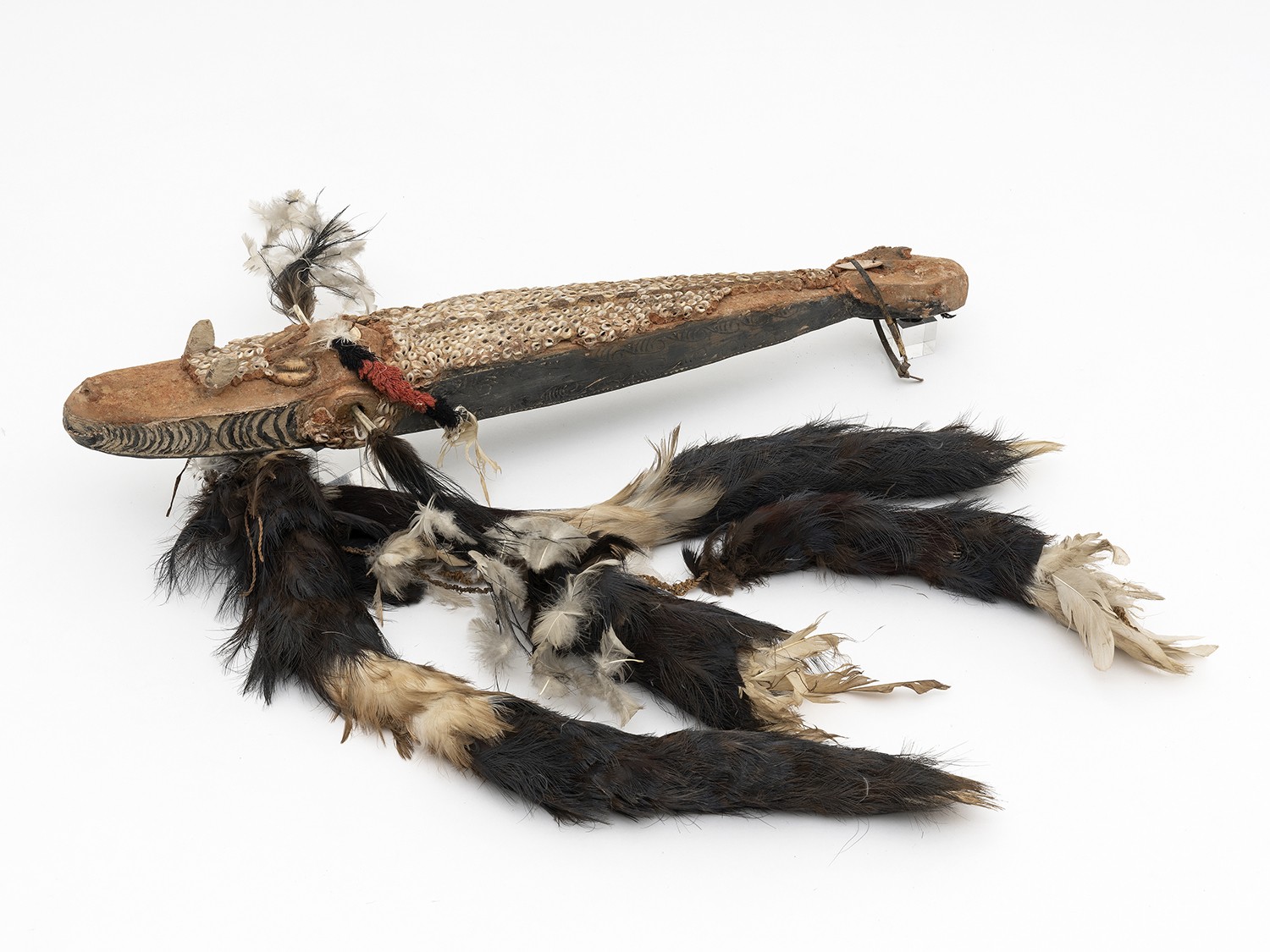REPRESENTATION OF A CROCODILE
19.05.2020
Oceania curator Matthias Claudius Hofmann on a mythical creation story
The Sepik river basin in the north-east of the island of New Guinea is one of the largest river systems in the world. It is also one of the most significant stylistic regions for artistic production in New Guinea. At its core are motifs borrowed from the region’s creation myth – particularly the primordial creator in the form of a massive crocodile. According to the myth, in prehistoric times the world consisted of an infinite ocean. The primordial crocodile carried mud on its back from the bottom of the ocean up to the surface, and this was used to create the first land. After the sun had arisen from its wide-opened jaws it created people and animals, which even today inhabit the land on its back.
The representation of a Crocodile
Due to its significance as a mythical creator and clan spirit, the crocodile is frequently represented on sections of houses, on boats and shields, as the handles of drums, on masks and as cult objects. One example of the latter is this representation of the primordial crocodile, which is made of wood and covered with clay and then decorated with nassa shells and feathers, with a tail wrapped in fur.
The myth lives on
Even today, the mythical crocodile is still very much in existence for the people of the Sepik region: the annual floods – when the river swells, overflows its banks and covers the land with water as far as the eye can see – seem to return the world once more to its primordial state. And the frequent earthquakes remind people of the creation story: when the crocodile moves, the earth shakes.
Representation of a crocodile. Sepik region, New Guinea. Wood, clay, nassa and kauri shells, feathers and fur. Probably acquired in 1961 during the first Frobenius expedition to New Guinea undertaken by Eike Haberland and Meinhard Schuster. Collection of the Weltkulturen Museum. Photo: Wolfgang Günzel, 2020
 Representation of a crocodile. Sepik region, New Guinea. Wood, clay, nassa and kauri shells, feathers and fur. Probably acquired in 1961 during the first Frobenius expedition to New Guinea undertaken by Eike Haberland and Meinhard Schuster. Collection of the Weltkulturen Museum. Photo: Wolfgang Günzel, 2020
Representation of a crocodile. Sepik region, New Guinea. Wood, clay, nassa and kauri shells, feathers and fur. Probably acquired in 1961 during the first Frobenius expedition to New Guinea undertaken by Eike Haberland and Meinhard Schuster. Collection of the Weltkulturen Museum. Photo: Wolfgang Günzel, 2020
